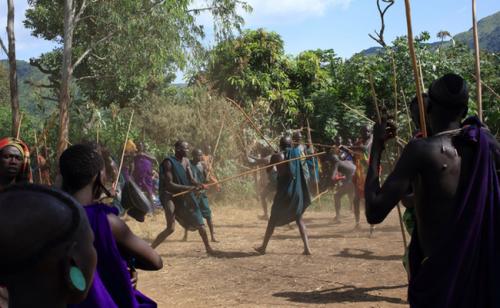Martial Arts: African styles, a mystery worth being in the know

The thought of Africa delivers a lot of misconstrued thoughts such as corruption, poverty, hunger, poor sanitation thanks to today’s media deliberately marginalizing the beauty of nature and cultures of the people. However, there is a lot more that meets the eye such as the dance, customs, dress code, art and crafts, belief and practices and even fighting styles which are part of several cultures.
What are the Origins of martial arts?
According to Hidden colors part 1, an African History documentary, martial arts is said to have a deeply rooted origin aspect from Africa, or/and by Africans in various continents. It provides evidence of the African people not only in Africa but having a presence in Asia, Greece, Europe, and Americas. The martial arts are knacks sprang from various cultures across the world from a traditional dance or form of entertainment, some were and are categorized as a defense mechanism and combat style. Capoeira is a magnificent take as an illustration of the Brazilian dance with elements of dance and music.
Bruce Lee, Shaolin monks, Jackie Chan, Jet Li, ninjas are the first thoughts that peer into our minds when we hear martial arts. Stumbling upon one of the most amazing documentaries depicted African martial arts in Dakar, Senegal. An art known as Laamb Wrestling. Just like the conventional martial arts like Judo, Karate, and taekwondo, African martial arts and its techniques have become schematized in the form of sport, artistic performance like dance and like in some parts of Africa is actually part of initiation into manhood. In West Africa much like MMA, Laamb has become Senegalese national sport with a multimillion dollar sponsorship. “Wrestlers have become stars on the scale to Michael Jordan,” says Malik Thiandoum, Senegalese sports journalist.
In Laamb, which in the Wolof language of the Senegalese people means to fight, points are rewarding in a takedown. The most important aspect of laamb wrestling is witchcraft. Each wrestler has his own “marabout” (Shaman) to prepare him for his fight on a spiritual level. The wrestling itself is your basic grappling and usual punches, you try to throw your opponent to the ground and if anything but your knees and elbows touch dirt, you lose.
Laamb wrestling has gained a reputation and has recognized participants from outside Africa, for example, Spaniard stars, Juan Espino, El Leon Blanca who were originally “Lucha Canaria” practitioners. “Lucha Canaria” is a form of folk wrestling originally from the Canary Islands, Spain. It starts in the middle of a sand circle and the objective is to throw the opponent off balance making them touch the sand with any part of their body, except the feet.
What other African fighting styles are out there?
According to Pedro Olavarria’s article on “ Styles of Martial Arts”, African wrestling styles are similar to the folk wrestling styles of various cultures such as the English “Shin Kicking”, Korean “Ssireum” Icelandic “Glima”, Spanish “Lucha Canaria” all share with Evala of Togo and Laamb of Senegal, the styles which focus on takedowns without ground grappling.
Dambe is a boxing style of the Hausa people of Nigeria. On hand is tightly wrapped and covered in twine and boxing glove and called the “spear” and the other hand is left bare and called the shield. Kicking is permitted and the goal is to knock your opponent to the ground. Arnis, also known as Eskrima and Kali is the national sport and martial art of the Philippines. It includes hand to hand combat, joint locks, grappling, and weapon disarming techniques.
Let’s not forget about Africa’s weapon systems, alongside Africa’s striking and wrestling styles, is stick fighting. From Egypt comes the “Tahtib” a form of weapon fighting with sticks, very similar with the “Donga” of the Suri tribesmen of Ethiopia used when defending their herds of cattle. The Zulu, on the other hand, use two sticks, a style known as “Nguni”, an attribute to Shaka Zulu. One stick is tied to one hand as a shield and the other is to strike the opponent.
Fighting styles across the world have different names as perceived by the various cultures. I hope this piece has broadened your scope on martial arts as it is not only what we see on television, there is so much the world has to offer that is not necessarily popularized on generic mass media and this piece is meant to translate, shake up and rise inquisition among anyone and everyone.
Advertise on APSense
This advertising space is available.
Post Your Ad Here
Post Your Ad Here
Comments